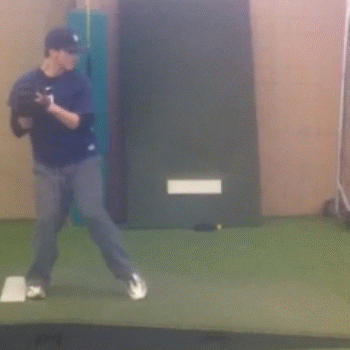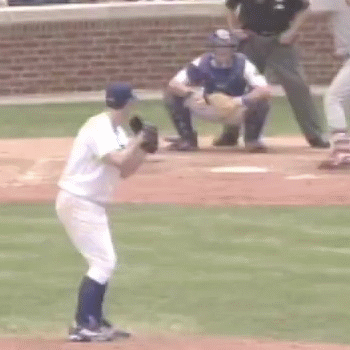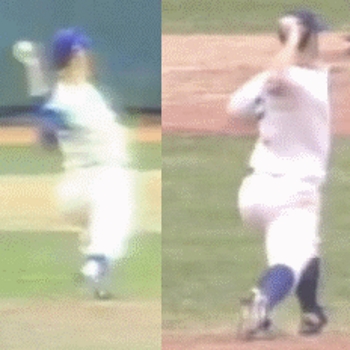In late 2012, I was contacted by a minor league baseball who was referred to me by his minor league (rehab) pitching coach. The interesting thing was this pitcher moved pretty much identically to Mark Prior, but wasn't trying to do so.

Inadvertent Inverted W
We talked at length about what he had been taught, and it turned out that he hadn't been taught much mechanics-wise. However, he was a reliever and had been taught to be very quick to the plate in order to keep runners from being able to steal on him.
I discussed this clip, what I saw in it, and why I thought that was happening, during my January 2013 presentation to the Illinois High School Baseball Coaches Association.
Then, in early 2015, I got into a "debate" with a prominent local pitching instructor whose client showed the same exact movement pattern and an Inverted W.
In the second half of the video, you can hear the instructor stumble as he realizes that what the student is doing is problematic. However, he doesn't understand why what he's seeing is happening.
I ended up meeting with him in person, and tried to understand why his student was moving the way he was. The instructor assured me that he doesn't teach the Inverted W, and I didn't -- and don't -- have any reason to doubt him.
However, I pointed out to the instructor that, whether he was teaching it or not, his student was still exhibiting an Inverted W, and that was a problem. After he explained to me what he taught and how, I suggested that the problem was tied in part to what he was teaching his pitchers in terms of lower body movement and his not understanding the concept of Separation. He strongly objected to the idea that there was any connection between a pitcher's upper and lower body.
That was the end of the conversation.

Mark Prior
What's interesting about both of these stories is that the way these pitchers move are pretty much perfect matches to how Mark Prior moved. I have come to believe that, while Tom House likely puts too much emphasis on lifting with the elbows and employs what I consider to be the most dangerous pitching drill, what may have caused Mark Prior's problems wasn't just what he was taught in terms of his arm action, but was also what he was taught in terms of his lower body and stride.
Why Things Changed
I believe it starts with trying to develop a least common denominator approach to teaching pitching mechanics. Specifically, one approach that will work with both athletes and non-athletes. To do that, you have to strip things down and out, because non-athletes don't have the body control to move as, or as well as, athletes.
That's the only logical explanation for the discrepancies between what Nolan Ryan (actually) did and what he says to do in Nolan Ryan's Pitcher's Bible.
In an attempt to simplify things, he over-simplified things.
Mike Epstein has run into similar problems.
The Killer Quintet
I initially assumed the problems that I was seeing was due to one, killer cue. However, I have come to believe the true source of the problem is a set of cues that I call The Killer Quintet.
The interesting thing is that only one of these cues is an arm action cue.
The other cues affect how the body moves and where it's able to generate power.
What This Looks Like

Nolan Ryan and Mark Prior
The easiest way to see the difference between the Efficient Pattern and the Modern Pattern is to compare Nolan Ryan and Mark Prior.

Nolan Ryan and Mark Prior
Nolan Ryan is Getting into his Back Leg and Loading the Rod; he's throwing the ball with his entire body.
In contrast, Mark Prior is upright and staying relatively tall. As a result, the only way that Mark Prior can load and throw the ball hard is by creating a Timing problem.